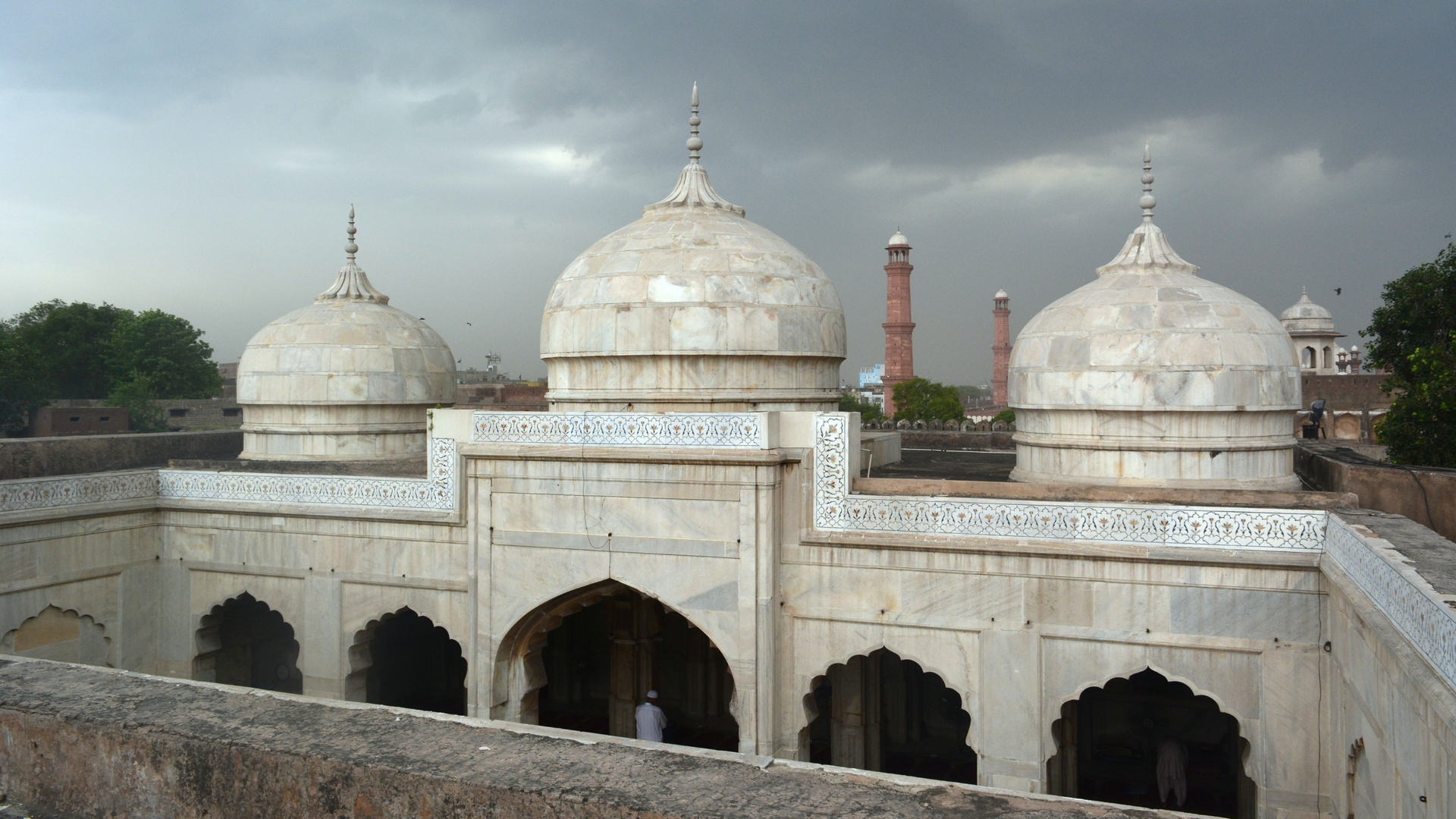Description
Property Name: Moti Masjid
Inventory No: 92-42-5
Date of infill of the inventory form: 2008-02-14
Country (State party): Pakistan
Province: Lahore
Town:
Geographic coordinates: 31° 35′ 18″ N
74° 18′ 49″ E
Historic Period: Mughal
Year of Construction: 1645
Style: Mughal
Original Use: Religious
Current Use: Mosque
Architect: Unknown
Significance
The Moti Masjid is located on the western side of the Lahore Fort, which is the only monument in Pakistan that represents the whole history of Mughal architecture. The masjid is entirely in white marble, with the cusped arches, engaged baluster columns, and smooth, fine contours associated with the style of many Shah Jahan’s buildings. It has two aisles of five bays, and a slightly raised central pishtaq, a portal with a rectangular frame.
Selection Criteria
ii. to exhibit an important interchange of human values, over a span of time or within a cultural area of the world, on developments in architecture or technology, monumental arts, town-planning or landscape design
iii. to bear a unique or at least exceptional testimony to a cultural tradition or to a civilization which is living or which has disappeared
iv. to be an outstanding example of a type of building, architectural or technological ensemble or landscape which illustrates (a) significant stage(s) in human history
State of Preservation
The small Moti Masjid (Pearl Mosque) was built by Shah Jahan in 1644 for the private use of the ladies of the royal household and was restored to its original delicacy in 1904.
The original Moti Masjid was built by Johangir to serve as a private prayer room for the Emperor and his wifes. However, the masjid seen today was completed in 1654 by Shah Jahan.
Later in both the Sikh and British era, the mosque was used as a building for the state treasury. In 1899, on the orders of Lord Curzon the Viceroy of Sub-continent, the building was restored to its former status, and some of the religious remnants were preserved at the Badshahi Mosque.
References
Amin, Mohamed. Journey through Pakistan. Nairohi. Cameropix Publishers International, 1982.
Khan, Ahmad Nabi. Monuments of Islamic civilization in Islamic Republic of Pakistan. Rabat: ISESCO, 2000.
Mumtaz, Kamil Khan. Architecture in Pakistan. London: Concept Media Ltd.; North America: Butterworth Architecture.


